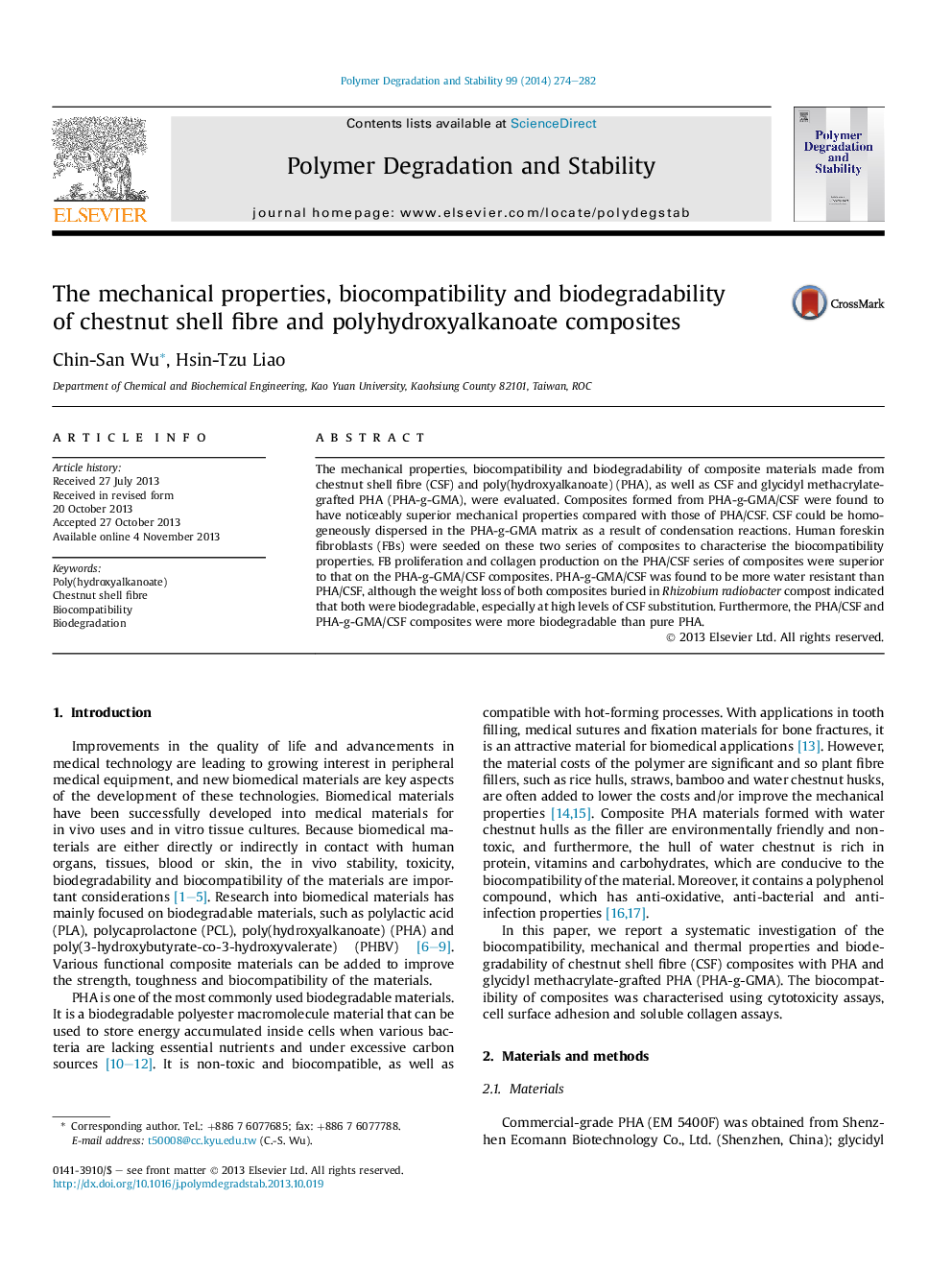| Article ID | Journal | Published Year | Pages | File Type |
|---|---|---|---|---|
| 5202114 | Polymer Degradation and Stability | 2014 | 9 Pages |
Abstract
The mechanical properties, biocompatibility and biodegradability of composite materials made from chestnut shell fibre (CSF) and poly(hydroxyalkanoate) (PHA), as well as CSF and glycidyl methacrylate-grafted PHA (PHA-g-GMA), were evaluated. Composites formed from PHA-g-GMA/CSF were found to have noticeably superior mechanical properties compared with those of PHA/CSF. CSF could be homogeneously dispersed in the PHA-g-GMA matrix as a result of condensation reactions. Human foreskin fibroblasts (FBs) were seeded on these two series of composites to characterise the biocompatibility properties. FB proliferation and collagen production on the PHA/CSF series of composites were superior to that on the PHA-g-GMA/CSF composites. PHA-g-GMA/CSF was found to be more water resistant than PHA/CSF, although the weight loss of both composites buried in Rhizobium radiobacter compost indicated that both were biodegradable, especially at high levels of CSF substitution. Furthermore, the PHA/CSF and PHA-g-GMA/CSF composites were more biodegradable than pure PHA.
Related Topics
Physical Sciences and Engineering
Chemistry
Organic Chemistry
Authors
Chin-San Wu, Hsin-Tzu Liao,
